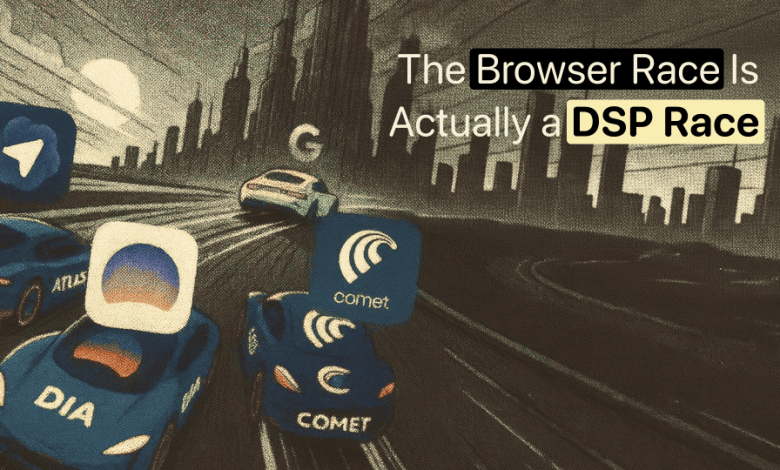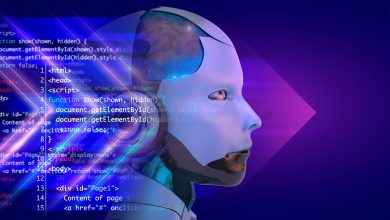
For more than two decades, the digital economy has been organized around predictable surfaces of demand and attention. Search engines monetized intent. Social networks monetized identity. Each created a closed ecosystem where visibility could be bought, measured, and optimized. These systems made digital marketing legible, giving advertisers and platforms a shared language of clicks, impressions, and conversions.
That architecture is starting to erode. A new layer is emerging—one that no longer behaves like a search results page or a social feed. It is the browser itself. As browsers integrate generative AI, memory, and automation, they are beginning to function less as interfaces and more as intelligent demand-side platforms (DSPs). The fundamental unit of optimization is shifting from ad impressions to user intent.
Traditionally, a DSP lets advertisers buy and optimize inventory across publishers and channels in real time. Google Ads, Meta Ads, and LinkedIn Ads operate as closed DSPs, owning the inventory, targeting data, and performance measurement. The new generation of AI browsers works differently. Instead of competing for ad space, they optimize for contextual relevance—summarizing text, suggesting actions, or even executing workflows automatically. The browser becomes a decision surface, quietly orchestrating how users discover, choose, and act.
This is not a distant future. Atlassian’s acquisition of The Browser Company was not an attempt to dethrone Chrome; it was a move to own the layer where knowledge work begins. Perplexity’s AI browser is not challenging Google’s search market share; it is redefining what a “search” even means. Each of these shifts points to the same trend: the browser is evolving into an intelligent workspace that interprets human intent and connects it to action. For marketers, this has enormous implications, especially as AI systems start to integrate directly with workflow tools and intelligent assistants.
This is where AI agent builders for marketing enter the picture. These platforms allow teams to design autonomous agents that can reason, execute, and adapt based on user context. In the same way early DSPs automated media buying, AI agent builders are beginning to automate marketing execution—generating content, distributing campaigns, and optimizing outreach across channels. The browser becomes their environment, a live ecosystem where agents can observe, respond, and personalize engagement at scale. As AI browsers mature, they will become the operating layer through which these marketing agents interface with the web, clients, and consumers alike.
The parallels with ad tech are striking. Traditional DSPs optimized for conversion rates; intelligent browsers and marketing agents optimize for intent alignment. In both cases, data is the fuel, but the granularity has changed. Instead of targeting demographics or behavior, AI browsers operate at the level of cognition—interpreting tone, timing, and context to determine relevance. The auction no longer happens in an ad exchange; it happens in real time within the interface, where every prompt, suggestion, or automation competes for the user’s next move.
The implications go beyond advertising. When a browser can predict what you’re trying to do and act accordingly, it becomes an extension of cognition. Every autocomplete or recommendation shapes how information is prioritized and what feels intuitive to click next. This subtle orchestration of relevance is the new terrain of competition. Companies like Google, Atlassian, and Perplexity aren’t just racing to build faster browsers—they are vying to define the invisible logic of decision-making itself.
For business leaders and marketers, the strategic questions are shifting. Will your product integrate directly into the browser layer or remain an external application? Will your AI agents coordinate with intelligent interfaces or compete against them for attention? And as traditional metrics like impressions and click-through rates lose relevance, what replaces them? In a world where AI agents and browsers interact seamlessly, effectiveness may be measured by inclusion, alignment, and trust rather than visibility alone.
The next generation of DSP logic will not be about auctioning ads but allocating cognitive real estate—deciding what suggestion or workflow deserves to surface at a given moment. As AI systems gain long-term memory and emotional inference, influence will depend less on visibility and more on fit, timing, and empathy. Advertising as interruption gives way to assistance as participation. The most persuasive brand interactions will not feel like ads at all; they will feel like help.
This evolution is not inherently good or bad—it is structural. Search defined the web through queries, social through networks, and now AI browsers through context. As these layers merge, advertising, recommendations, and tools will blend into a unified field of assistance. Every AI-powered browser tab will function as a marketplace of cognition, where attention is the inventory and relevance is the currency.
The companies that succeed in this environment will not necessarily have the largest budgets or datasets. They will be the ones that interpret human intent with accuracy, respect, and adaptability. In that sense, the race among Perplexity, Google, and others is not merely about browser innovation—it is about building the next generation of DSP infrastructure. And for marketers, the rise of AI browsers and agent builders represents both a challenge and an invitation: to think less about capturing attention and more about designing systems that align with intent.
That is why the AI browser race is, at its core, a DSP race—the quiet contest to define how discovery, decision, and demand will move across the web in the age of intelligent interfaces.


